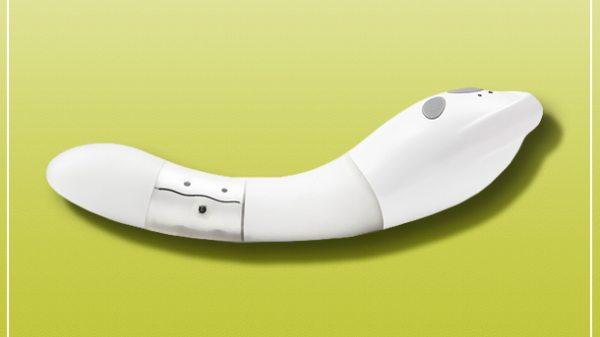Vaginal rejuvenation is often associated with cosmetic enhancement, but for many women, it offers real medical relief from symptoms that significantly impact quality of life. Whether caused by childbirth, aging, menopause, or underlying conditions, changes to vaginal tissue can result in discomfort, dysfunction, or even emotional distress.
Below, we explore the top medical reasons why patients consider vaginal rejuvenation, including how various treatments can improve symptoms and restore well-being.
🩺 1. Vaginal Laxity After Childbirth
Cause:
Vaginal tissues stretch during vaginal delivery, especially after multiple births or large babies. This can lead to a sensation of looseness, reduced friction during intercourse, and pelvic floor weakening.
Symptoms:
- Reduced sexual sensation
- Vaginal “gaping” or air passage
- Pelvic heaviness or discomfort
How Rejuvenation Helps:
- Laser and radiofrequency (RF) treatments stimulate collagen production, improving firmness.
- Vaginoplasty offers permanent tightening through surgical repair of stretched muscles and tissues.
🩺 2. Stress Urinary Incontinence (SUI)
Cause:
SUI occurs when weakened pelvic tissues and urethral support cause leakage during physical stress (e.g., laughing, sneezing, or exercising). Common after childbirth and menopause.
Symptoms:
- Urine leakage with exertion
- Difficulty holding urine during daily activity
- Social embarrassment
How Rejuvenation Helps:
- Non-surgical RF or laser therapy can strengthen vaginal walls and urethral support.
- PRP injections around the urethra (e.g., O-Shot®) may improve sphincter function.
- Surgical options (e.g., sling procedures) may be considered in more severe cases.
🩺 3. Vaginal Dryness and Atrophy
Cause:
Estrogen loss—due to menopause, breastfeeding, or certain medications—causes thinning of the vaginal lining, less lubrication, and a more fragile environment.
Symptoms:
- Vaginal burning or irritation
- Painful intercourse (dyspareunia)
- Recurrent UTIs or infections
- Vaginal tightness or tearing
How Rejuvenation Helps:
- CO₂ laser or RF treatments improve tissue hydration, elasticity, and vascularity.
- PRP therapy uses your own growth factors to regenerate mucosal tissue.
- Ideal for women who can’t or don’t want to use hormonal therapy.
🩺 4. Pain During Intercourse (Dyspareunia)
Cause:
Vaginal dryness, atrophy, scar tissue from childbirth, or vaginismus (muscle spasms) can lead to painful intimacy.
Symptoms:
- Burning, stabbing, or aching pain during sex
- Emotional distress and sexual avoidance
- Vaginal tightness or inflammation
How Rejuvenation Helps:
- Non-invasive treatments increase blood flow and improve natural lubrication.
- Microneedling with PRP enhances tissue healing and nerve sensitivity.
- Surgical correction may help if scar tissue or anatomical deformity is involved.
🩺 5. Genital Scarring or Damage Post-Childbirth
Cause:
Episiotomies, vaginal tears, or poorly healed stitches after delivery may result in painful or unsightly scarring.
Symptoms:
- Pain with sex or tampon use
- Visible scar deformities
- Skin tightness or tissue pulling
How Rejuvenation Helps:
- Laser resurfacing or RF microneedling can soften scar tissue.
- Perineoplasty surgically corrects scarring and restores anatomy.
🩺 6. Pelvic Floor Weakness
Cause:
Aging, childbirth, and lack of muscular support weaken pelvic floor structures, affecting bladder and bowel control and vaginal tone.
Symptoms:
- Vaginal bulging or heaviness
- Mild prolapse symptoms
- Reduced sexual tone
How Rejuvenation Helps:
- RF and laser devices support mild pelvic tightening.
- Pelvic floor therapy often complements rejuvenation.
- In advanced cases, surgical pelvic floor repair may be needed.
🩺 7. Reduced Sexual Pleasure or Orgasmic Dysfunction
Cause:
Aging, childbirth, or reduced blood flow to the clitoris and vaginal walls can decrease arousal and sensation.
Symptoms:
- Delayed or absent orgasms
- Decreased clitoral sensitivity
- Loss of confidence during intimacy
How Rejuvenation Helps:
- PRP injections (O-Shot®) target the G-spot and clitoris to improve nerve response and lubrication.
- Laser and RF treatments enhance tissue responsiveness and sensitivity.
- Often paired with sex therapy or hormone evaluation.
🩺 8. Changes from Cancer Treatments
Cause:
Radiation, chemotherapy, or surgical menopause from gynecologic cancers can severely affect vaginal health.
Symptoms:
- Severe dryness and thinning
- Fragile vaginal tissue
- Pain with exams or intercourse
How Rejuvenation Helps:
- Hormone-free options like laser or RF therapy are valuable for cancer survivors.
- PRP and stem cell therapies may promote healing and tissue regeneration.
🩺 9. Psychological and Quality-of-Life Concerns
While not always purely medical, changes in vaginal appearance or function can cause:
- Decreased self-esteem
- Avoidance of intimacy
- Body image distress
- Emotional strain in relationships
Vaginal rejuvenation—especially when medically indicated—can play a therapeutic role in helping women reclaim confidence, identity, and intimacy.
✅ Final Thoughts
Vaginal rejuvenation offers real, safe, and medically beneficial solutions for women struggling with functional issues—not just cosmetic ones. Whether you’re navigating menopause, post-pregnancy recovery, incontinence, or chronic discomfort, it’s important to know that treatment options exist beyond hormones or surgery alone.
Always:
- Seek care from a board-certified gynecologist or urogynecologist
- Get a proper diagnosis through medical evaluation
- Understand your options—non-surgical vs surgical, hormonal vs non-hormonal
- Prioritize safety, transparency, and evidence-based care




